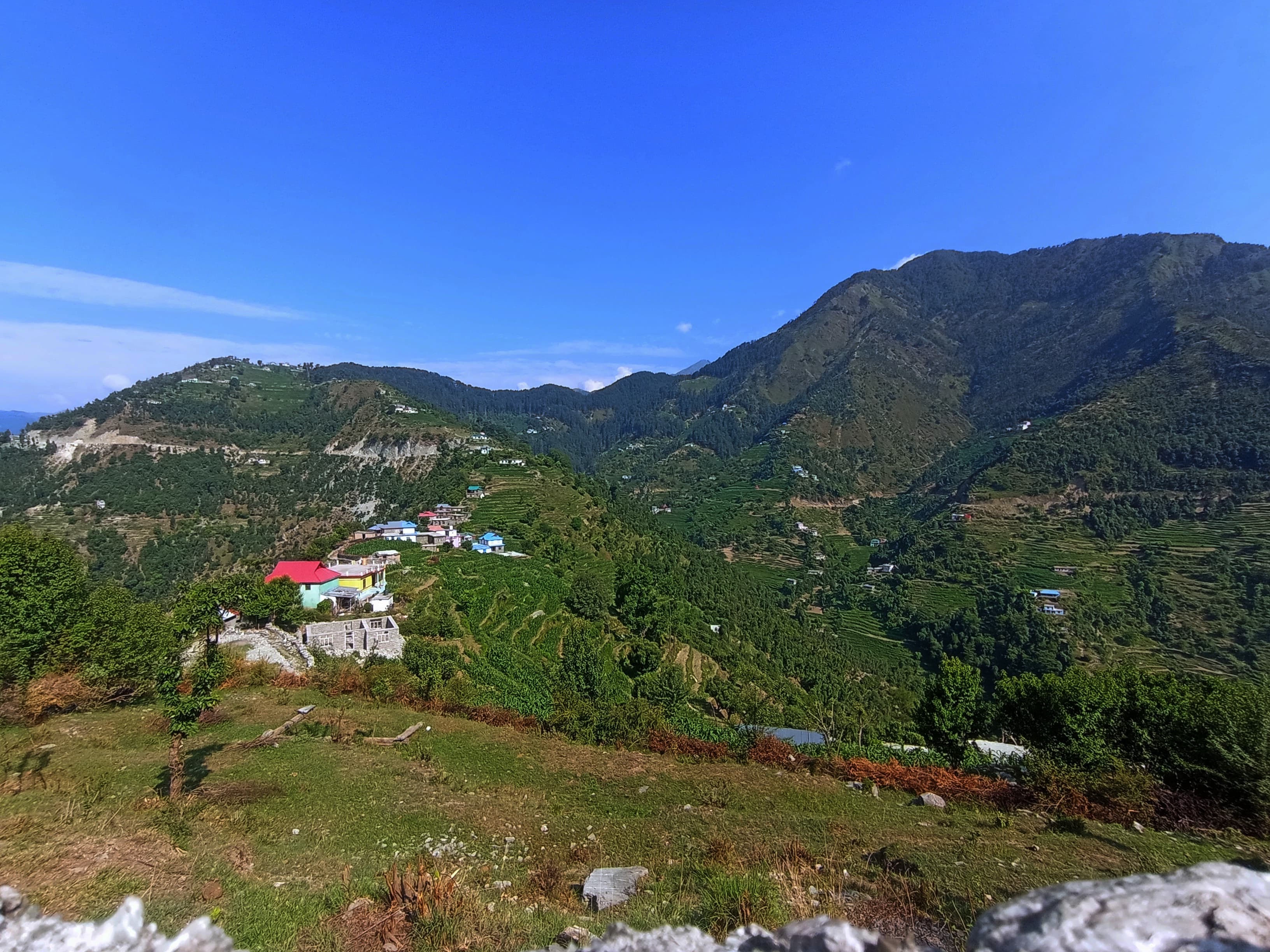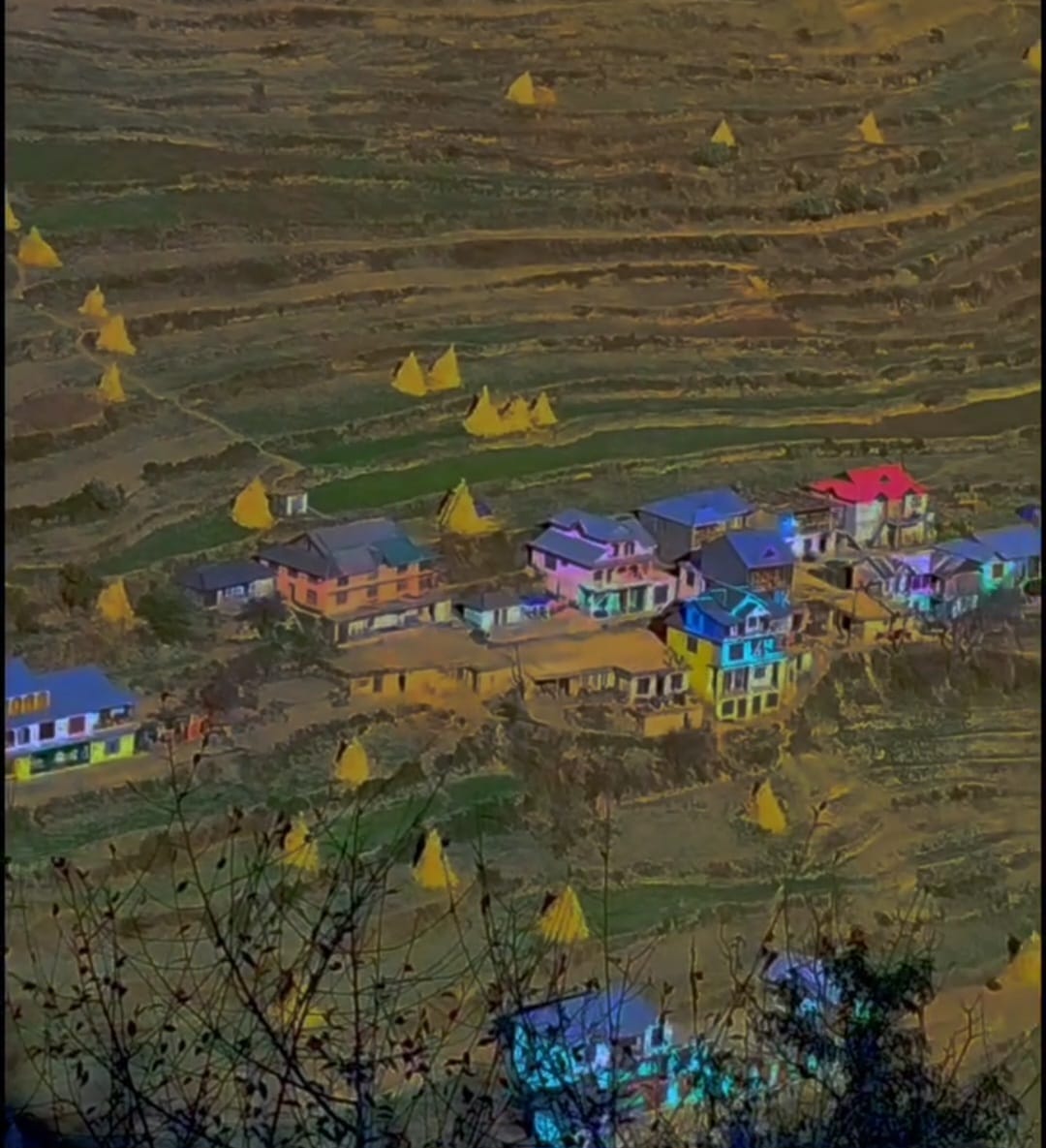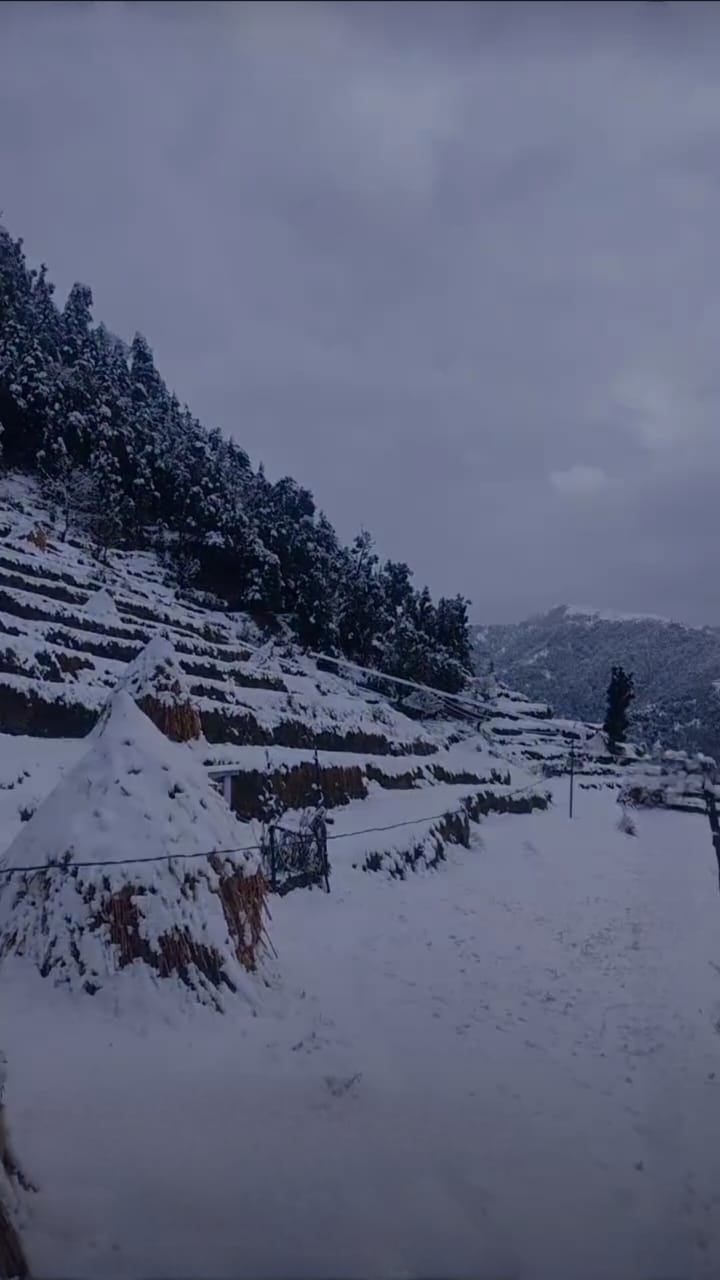Description
BHANDAR VILLAGE OVERVIEW:
Bhandar, a rural village located in the Bani tehsil of the Kathua district in Jammu & Kashmir, is a small yet significant part of the region’s socio-economic landscape. The village, despite its relatively remote location, remains an important center for agriculture and local trade within the surrounding communities. While Kathua, the district headquarters, lies about 194 kilometers away, Bhandar's strategic positioning within the network of rural villages in the Bani tehsil allows it to serve as a critical link for agricultural exchange and social collaboration. The village’s proximity to Bani (30 km) provides a connection to essential services and markets, allowing residents to maintain a livelihood largely centered around agriculture, small-scale industries, and local crafts.
Though Bhandar is not easily accessible to larger urban centers, it is still a vital community in the rural expanse of Jammu & Kashmir. The socio-cultural fabric of the village is tightly knit, with deep-rooted traditions, customs, and community practices. The social structure in Bhandar is primarily agrarian, with a heavy reliance on farming, livestock rearing, and seasonal labor. Despite the challenges posed by its geographical isolation, the village plays a central role in shaping the economy and culture of the region.
GEOGRAPHICAL AND DEMOGRAPHIC INFORMATION:
Bhandar covers a total land area of 1,568 hectares, a sizable expanse of which is used for agricultural purposes. The fertile land, fed by local streams and seasonal rivers, allows for the cultivation of a variety of crops. The village sits at a moderate elevation, surrounded by mountainous terrain typical of the region. The geographical features of Bhandar provide both advantages and challenges. While the fertile land supports diverse crops like wheat, maize, barley, and vegetables, the village’s location in a hilly area can also make it prone to soil erosion, especially during the monsoon season, and restricts the ease of transport and connectivity.
The population of Bhandar is approximately 1,732 people, with a gender distribution of 909 males and 823 females. The population is spread across 340 households, indicating that Bhandar is a moderately populated village, but one where the majority of residents likely live in close-knit family units. The villagers’ daily lives are heavily shaped by the rhythms of agriculture, and family members often work together in the fields, continuing generational farming practices.
In terms of literacy, the village faces significant challenges. The overall literacy rate stands at just 39.49%, a stark contrast to urban areas where literacy levels tend to be much higher. The disparity in literacy rates between males (54.35%) and females (23.09%) reflects a broader socio-cultural issue prevalent in many rural areas, where educational opportunities for girls are often limited due to traditional gender roles, early marriages, and a lack of facilities or motivation for families to prioritize female education. This gender gap in literacy is a key area for intervention, as improving education for women and girls has the potential to significantly improve the socio-economic prospects of the community. Educated women are more likely to invest in the health and education of their own children, thus fostering a positive cycle of community development.
PROXIMITY AND ACCESSIBILITY:
One of the significant challenges faced by Bhandar is its relative remoteness from larger urban centers. While the village is accessible to Bani, which serves as the local administrative and economic hub, the 30-kilometer distance can still pose difficulties for villagers, particularly when road conditions deteriorate during the winter months or monsoons. The road connecting Bhandar to Bani is crucial, as it links the village to markets, government services, healthcare facilities, and schools. However, the road infrastructure is often insufficient, and transportation can become a challenge during adverse weather conditions. There have been occasional reports of villagers being stranded or facing delays in accessing essential services due to poor road conditions, making the case for improving infrastructure a high priority.
Additionally, the 194-kilometer distance to Kathua, the district headquarters, underscores the challenges of governance and administrative support. Bhandar’s residents are often distant from district-level resources, including higher education institutions, large hospitals, and bureaucratic services. This geographical isolation from administrative hubs hinders efficient service delivery, and local residents may find it challenging to engage in government schemes or benefit from welfare initiatives that require travel to Kathua.
Despite these obstacles, the community is highly resilient. Villagers often rely on their own networks and the support of neighboring communities for various needs. Many families from Bhandar commute to Bani for trade, accessing markets for agricultural produce or purchasing essential goods. Likewise, neighboring villages in the Bani tehsil help support each other in times of need, particularly in times of agricultural distress or natural calamities.
NEARBY VILLAGES AND COMMUNITY NETWORK:
Bhandar’s surrounding villages—Sandroon, Seru, Kakil, Dhar, Sandhi, Fatehpur, and Tapper—form an interconnected web of rural communities that share both economic and cultural ties. These villages, like Bhandar, are predominantly agricultural in nature and rely heavily on local natural resources for their livelihood. Many of the neighboring villages share similar challenges, such as limited educational opportunities, poor infrastructure, and healthcare access. However, these challenges also foster a spirit of interdependence, as the villages often work together on mutual projects, such as irrigation management, road construction, and communal governance.
For example, during harvest seasons, neighboring villages frequently pool their resources to help with labor, organizing communal workdays where villagers from different settlements come together to assist one another with planting, harvesting, or animal husbandry. This solidarity is a hallmark of rural life in Bhandar and its surrounding areas, and such collaboration is essential for coping with the challenges of limited resources and infrastructure.
In addition, these villages often cooperate in local governance structures, such as panchayats (village councils), where decisions on land use, water management, and education are made collectively. The village panchayats are the backbone of rural governance, and the strength of these institutions often relies on the collaborative effort of neighboring communities to address common concerns.
CHALLENGES AND DEVELOPMENT OPPORTUNITIES:
Despite its vibrant community life, Bhandar faces significant hurdles that impede its socio-economic development. These challenges are rooted in a combination of geographic, cultural, and economic factors that require targeted interventions.
-
Educational Challenges: The most pressing issue in Bhandar is the low literacy rate, particularly among females. The existing educational infrastructure is insufficient to cater to the needs of the entire village. The village has limited access to schools, and those that are available are often under-resourced, with outdated teaching materials and a lack of qualified teachers. To address these challenges, initiatives such as mobile education units, adult literacy programs, and scholarship opportunities for female students should be explored. Community-based interventions, where local women are trained as educators, could also serve to break down cultural barriers to female education.
-
Healthcare Access and Infrastructure: Bhandar’s healthcare facilities are limited, with only a small dispensary serving the local population. Residents often have to travel to Bani or Kathua for more advanced medical treatment, which can be especially difficult in emergencies or during extreme weather conditions. Establishing a primary healthcare center (PHC) within the village, staffed with trained medical professionals, would help address basic health needs. Additionally, improving maternal and child health services, including the availability of prenatal and postnatal care, would significantly improve the health outcomes for women and children in Bhandar.
-
Road Infrastructure and Transportation: One of the major obstacles to development in Bhandar is its inadequate road infrastructure. During the monsoon season, landslides and flooding can make travel impossible, cutting the village off from nearby towns. Upgrading roads, improving bridges, and ensuring all-weather access will be crucial for facilitating economic activities, education, and healthcare.
-
Water Management and Sanitation: Water scarcity is an issue in many rural areas, and Bhandar is no exception. Although the village has access to local streams, water management remains a challenge, particularly during dry months. A local water harvesting system could help mitigate shortages, and improving the village’s sanitation infrastructure—such as constructing community toilets and improving waste disposal systems—would help address health concerns linked to poor sanitation.
-
Economic Diversification and Empowerment: While agriculture remains the backbone of Bhandar’s economy, the village could benefit from diversifying into other sectors. Small-scale industries such as weaving, carpentry, or pottery could provide additional sources of income for villagers. Developing rural tourism, based on the natural beauty and cultural heritage of Bhandar, could also become a viable industry. The involvement of women in small-scale entrepreneurship, supported by micro-financing initiatives, would help create opportunities for female empowerment and economic independence.
CONCLUSION:
Bhandar village, while remote, represents a dynamic and resilient rural community with great potential for growth and development. By addressing critical issues such as education, healthcare, infrastructure, and economic diversification, the village can move towards a more sustainable and prosperous future. Through government support, local initiatives, and regional collaboration, Bhandar has the opportunity to overcome its challenges and create a model for rural development that can inspire other remote communities in Jammu & Kashmir and beyond.
Improving female literacy, strengthening healthcare services, enhancing infrastructure, and promoting sustainable agricultural and economic practices will be essential to ensuring that Bhandar thrives in the years to come. With its strong sense of community and shared values, Bhandar is well-positioned to take the next step toward a more prosperous and equitable future for all its residents.
Photos
Videos
Location Map
Contact Information
| Address |
Bhandar village |
| Phone Number |
919622078419 |
| Website | https://villageinfo.in/jammu-&-kashmir/kathua/bani/bhandar.html |
Reviews (1)






































The overall information about the village is good and the photos and videos describes the village best.